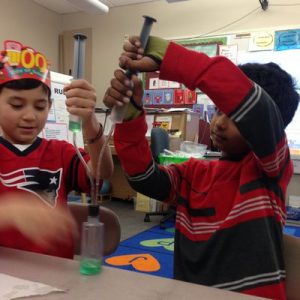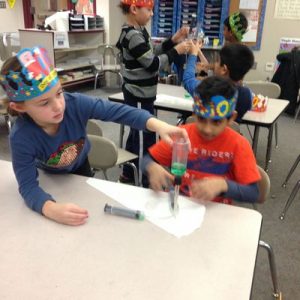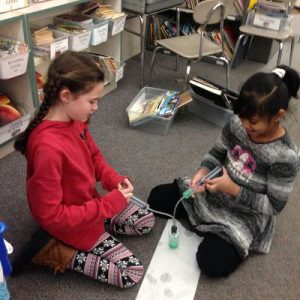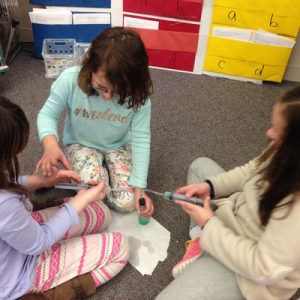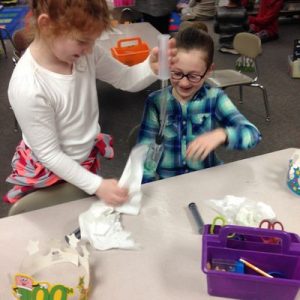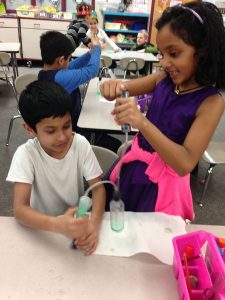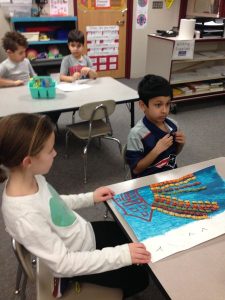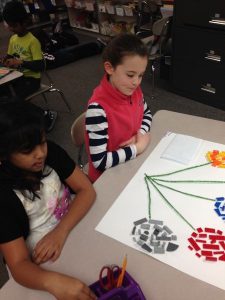Posted by kavery508 | Posted in Uncategorized | Posted on February 13, 2017
 100 Day was a blast! The kids solved problems involving 100, drew arrays and wrote multiplication facts following a story of 100 Hungry Ants (Pinczes), and most importantly learned from each other as they paired up and shared 100 Day projects!
100 Day was a blast! The kids solved problems involving 100, drew arrays and wrote multiplication facts following a story of 100 Hungry Ants (Pinczes), and most importantly learned from each other as they paired up and shared 100 Day projects!
 Our CAFE focus now turns to Summarizing. This comprehension strategy is similar to Determining Importance in that it leaves out small details in favor of the big ideas and consequential events in a story or in nonfiction texts. We will learn to summarize narratives in terms of the main characters, problems and solutions, and changes the characters undergo on their journey. As a simple example, in Green Eggs and Ham (Dr. Seuss) the main character becomes increasingly annoyed at being pestered to try something he doesn’t want. Then he resigns out of exhaustion and frustration. Finally, he is surprised at his delight with this unusual breakfast. The following site from the VA Dept. of Ed has a terrific collection of PDFs and links you can use to have your child practice this essential skill after doing reading homework: http://wvde.state.wv.us/strategybank/summarization.html
Our CAFE focus now turns to Summarizing. This comprehension strategy is similar to Determining Importance in that it leaves out small details in favor of the big ideas and consequential events in a story or in nonfiction texts. We will learn to summarize narratives in terms of the main characters, problems and solutions, and changes the characters undergo on their journey. As a simple example, in Green Eggs and Ham (Dr. Seuss) the main character becomes increasingly annoyed at being pestered to try something he doesn’t want. Then he resigns out of exhaustion and frustration. Finally, he is surprised at his delight with this unusual breakfast. The following site from the VA Dept. of Ed has a terrific collection of PDFs and links you can use to have your child practice this essential skill after doing reading homework: http://wvde.state.wv.us/strategybank/summarization.html
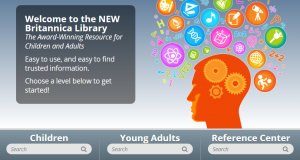 This week students will begin a project integrating reading, social studies, and writing. Using iPads, students will be guided through the Shrewsbury Public Library portal to the Encyclopedia Britannica Kids site, where they will for information about famous Americans they have chosen to research. Students will then explore the multimedia information given, and learn to print their findings–awesome! Students will then apply reading comprehension strategies (Asking Questions and Reading to Find Answers; Determining Importance) to find evidence of character traits in historical figures, and create opinion writing reports incorporating their findings.
This week students will begin a project integrating reading, social studies, and writing. Using iPads, students will be guided through the Shrewsbury Public Library portal to the Encyclopedia Britannica Kids site, where they will for information about famous Americans they have chosen to research. Students will then explore the multimedia information given, and learn to print their findings–awesome! Students will then apply reading comprehension strategies (Asking Questions and Reading to Find Answers; Determining Importance) to find evidence of character traits in historical figures, and create opinion writing reports incorporating their findings.
 The focus of this week’s math is estimating by rounding up/down and using estimation as a way to check the reasonableness of sums/differences. These are VERY important skills that require students to develop and apply number sense as they think critically about math.
The focus of this week’s math is estimating by rounding up/down and using estimation as a way to check the reasonableness of sums/differences. These are VERY important skills that require students to develop and apply number sense as they think critically about math.
At first, students just need to learn and practice the basic skill of rounding to the nearest 10. Next, to check that a sum/difference is reasonable, they will learn to use estimates. Take this example: When solving 67 + 44, I can estimate the sum as 110 (67 rounds up to 70, plus 44 which rounds down to 40). My actual answer therefore needs to be close to 110 (no more than 10 away from the actual answer). If I get an answer of 111, my estimate shows that my answer is reasonable and I likely have it correct. However if my answer is, say, 121 then I better check my work because that answer is too large to be correct. The beauty of using estimates is that they push kids to think of the numbers involved by rounding them into 10s and 100s, which they can ‘hold in their heads’ much easier than numbers like 67 and 44.
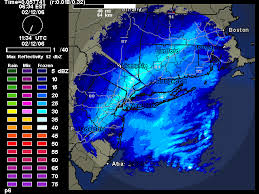 Our social studies map work will continue into the next few weeks (see last week’s blog for details). At home, a neat way to review natural features (oceans, landforms, atmosphere, plants, and animals) and cultural features (anything made by people, including farms and borders) is to watch local weather forecasts.The maps show borders of states, towns, counties, landforms, water sources, air flow, etc. See how many you can find!
Our social studies map work will continue into the next few weeks (see last week’s blog for details). At home, a neat way to review natural features (oceans, landforms, atmosphere, plants, and animals) and cultural features (anything made by people, including farms and borders) is to watch local weather forecasts.The maps show borders of states, towns, counties, landforms, water sources, air flow, etc. See how many you can find!
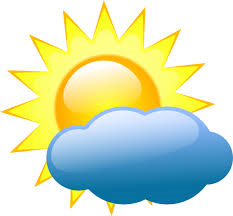 In science last week, we applied our knowledge of air pressure to devise ways to move water through a system. Students were actively engaged in discussion and experimentation as they found a variety of solutions. Here are some pictures of us in action! (Plus a few 100 Day pix–more next week.)
In science last week, we applied our knowledge of air pressure to devise ways to move water through a system. Students were actively engaged in discussion and experimentation as they found a variety of solutions. Here are some pictures of us in action! (Plus a few 100 Day pix–more next week.)

